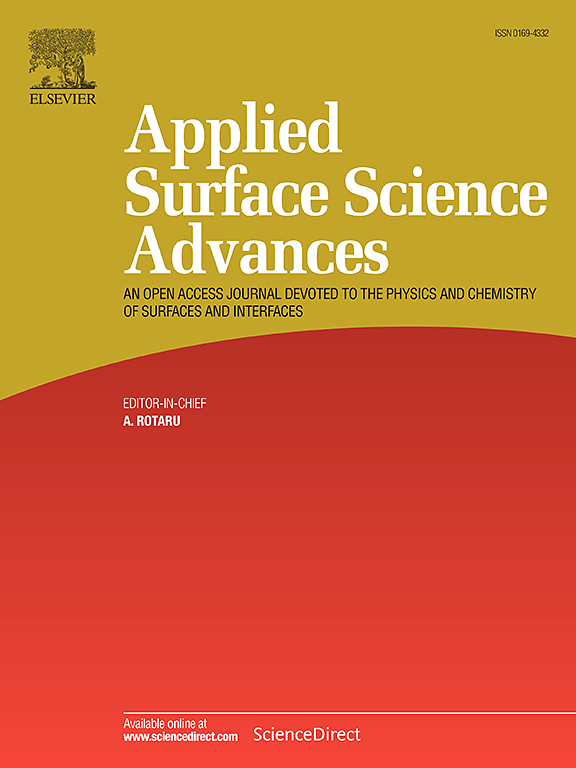Effect of CO2 addition to Ar on gas cluster ion beam sputtering of a Si wafer: An in-situ XPS study
IF 7.5
Q1 CHEMISTRY, PHYSICAL
引用次数: 0
Abstract
Many recent studies showed mixing CO2 with the Ar gas source improves the secondary ionization yield of an Ar gas cluster ion beam (GCIB) with enhanced depth resolution. However, the impact of CO2 addition on the surface chemical structure remains unclear. In the present work, we studied the effect of CO2 addition to Ar on the GCIB sputtering behavior of a Si wafer surface using an in-situ GCIB & X-ray photoelectron spectroscopy (XPS) combined system. During preferential sputtering with Ar GCIB, substoichiometric SiOx (x < 2) forms, leaving unstable Si species on the surface. These species could interact with surface carbon impurities, leading to the formation of SiC. In addition, a slight distortion of Si lattice could increase its amorphous character. Mixing CO2 with Ar significantly reduces these structural changes without specific carbon contamination.
CO2加入Ar对硅片气簇离子束溅射的影响:原位XPS研究
最近的许多研究表明,将CO2与Ar气源混合可以提高Ar气团离子束(GCIB)的二次电离率,并提高深度分辨率。然而,CO2的加入对表面化学结构的影响尚不清楚。在本研究中,我们利用原位GCIB技术研究了CO2加入Ar对硅晶片表面GCIB溅射行为的影响;x射线光电子能谱(XPS)组合系统。在Ar GCIB优先溅射过程中,亚化学计量SiOx (x <;2)形成,在表面留下不稳定的Si物质。这些物质可以与表面碳杂质相互作用,导致SiC的形成。此外,硅晶格的轻微畸变会增加其非晶性。将CO2与Ar混合可以显著减少这些结构变化,而不会产生特定的碳污染。
本文章由计算机程序翻译,如有差异,请以英文原文为准。
求助全文
约1分钟内获得全文
求助全文

 求助内容:
求助内容: 应助结果提醒方式:
应助结果提醒方式:


